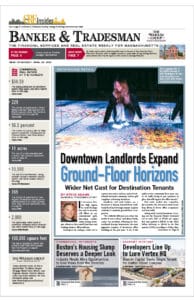Do home values have any significance when it comes to presidential elections? Not directly. But indirectly they are manifestations of economic growth, unemployment rates, incomes, household formations, population inflows and outflows, along with historical patterns of land use and restrictions on building.
Almost certainly home values – and the rate at which they appreciate – have some subtle impact on homeowners’ outlooks: If your property value is falling or mired in negative equity, you’re probably less likely to have positive feelings about the current state of the economy and prospects for immediate improvements. If your home value has been steadily rising, you might be feeling a little better about your personal finances, more satisfied with economic trends and more sanguine about where things are headed.
Housing Trends By State
With this in mind, I asked the housing analytics experts at Trulia, the online real estate data and sales information site, to do a purely statistical study of housing value trends in this election year’s battleground or swing states, plus all the traditional red (typically Republican) and blue (typically Democratic) states. The red and blue breakdowns were based on results from the past four presidential elections. Battleground states were based on recent polls taken before the first presidential debate. Values and appreciation were measured from January 2012 through July of this year.
So what did researchers find?
There are drastic differences in median home values that set apart red states from blue states – maybe more than you knew. Of the top 10 highest-cost states, nine are solidly blue. Just one – Alaska – trends red. The six states with the lowest median homes values – West Virginia ($99,800), Oklahoma ($113, 400), Mississippi ($114,500), Arkansas ($114,700), Indiana ($116, 700) and Kansas ($120,800) – are all red. The $367,100 separation between the median price in the most costly mainland blue state (California at $466,900) and West Virginia is chasmic, as are the differences in underlying economic conditions. (Reliably blue Hawaii has the highest median, $565,900.)
Battleground states (Florida, North Carolina, Ohio, Arizona, Nevada, Pennsylvania, New Hampshire and Georgia) are a mixed bag. Their relatively moderate home values generally resemble red states more than blue, but their recent jumps in annual appreciation rates, taken as a weighted average, are higher than either reds or blues. As of July, the appreciation rate for homes in battleground states was 6.4 percent, while in red states it was 5.23 percent and in blue states 5.14 percent.
This year’s battleground states have experienced significantly different housing value patterns during the post-recession period. Though they are all seeing positive appreciation this year, they have radically contrasting recent histories. Nevada, Florida and Arizona were hotbeds of hyperinflation and toxic mortgage practices during the boom years, and all three suffered horrendous depreciation and foreclosure losses during the bust and recession. But since 2012, they have roared back. In January 2012, the median Nevada house was worth $122,800. As of this past July, that had grown to $218,400. In January 2012, the median Arizona house was valued at $136,500. Last July that had grown to $208,400. Florida has seen similar increases – a $126,300 post-recession median in early 2012, compared with $191,300 this year.
Several swing states, however, haven’t rebounded as energetically as the others because of economic issues. North Carolina, where recent polls indicate an exceptionally tight race, had a median value of $137,500 at the beginning of 2012; today it’s $153,300. Pennsylvania came out of the recession with a $143,600 median value; by mid-year 2016, that had grown to just $154,500. Ohio’s median has moved from $107,200 four years ago to $121,600 this year.
So what do we glean from these housing numbers? Certainly there are no predictions here about how homeowners will vote. Housing is just one element in an economic backdrop, not a key causative factor in voting behavior. But it cannot be totally ignored. Felipe Chacon, a housing data analyst with Trulia, commented in an interview that “if you’re hearing doom and gloom and you’re in a swing state that’s been doing relatively well recently,” maybe you are marginally less likely to believe the doom and gloom.
On the other hand, if you’re a homeowner in a traditionally blue state like Maine, where employment and income growth have lagged behind national averages and median home values have plunged from $180,400 at the start of 2012 to $134,500 as of July, you might be more open to messages that major changes in economic policies are needed.







